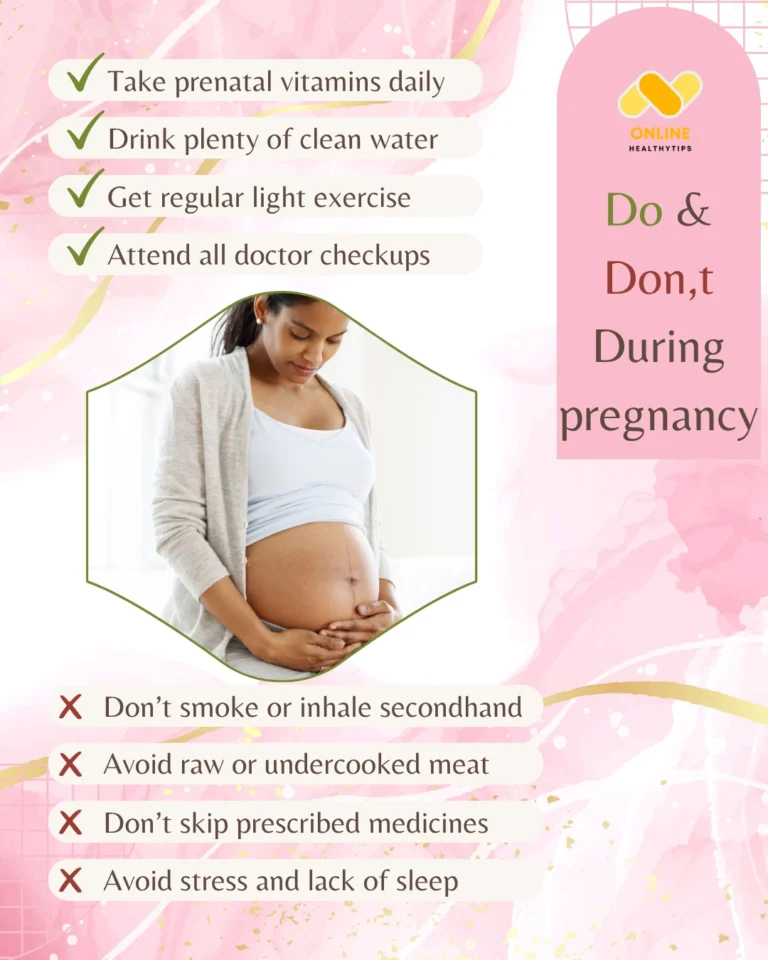


Safe Pregnancy Exercises for Beginners

1. Introduction
Pregnancy is one of the most transformative periods in a woman’s life — physically, emotionally, and spiritually. While it’s essential to rest and nourish your body, staying active through safe exercises during pregnancy can boost your well-being, ease discomfort, and even make labor smoother.
This comprehensive guide is designed for beginners — new moms who want to move mindfully and maintain strength throughout their pregnancy.
2. Why Exercise During Pregnancy Matters
Regular movement helps improve circulation, relieve back pain, reduce stress, and boost mood. Moreover, studies show that exercising during pregnancy can lead to shorter labor, fewer complications, and faster postpartum recovery.
But not all workouts are safe. That’s why knowing what’s safe, when, and how to modify exercises is key.

3. Key Benefits of Prenatal Exercise
Here’s how gentle exercise can improve your pregnancy:
💪 Improves muscle tone and endurance
💤 Promotes better sleep
💨 Reduces shortness of breath
🧠 Enhances mental well-being
📉 Lowers risk of gestational diabetes
💧 Reduces swelling and fluid retention
🤰 Prepares body for labor and recovery
4. Safety Guidelines Before Starting
Before beginning any exercise plan during pregnancy:
✅ Consult your OB-GYN
Every pregnancy is unique — always get medical clearance first.
✅ Listen to your body
Avoid overexertion. Stop if you feel dizzy, short of breath, or experience pain.
✅ Stay hydrated
Drink plenty of water before, during, and after workouts.
✅ Avoid overheating
Keep workouts cool and avoid hot environments, especially in the first trimester.

5. General Rules for Pregnancy Workouts
To stay safe while exercising:
🕒 Exercise 20–30 minutes per day, 3–5 days a week
🧘 Prioritize low-impact, gentle routines
🚫 Avoid exercises with risk of falling or abdominal trauma
❤️ Monitor your heart rate – stay in a comfortable zone
🪑 Use support (chairs, walls, mats) for balance
6. Best Exercises for Each Trimester
First Trimester (Weeks 1–12)
Walking
Light strength training (bodyweight)
Prenatal yoga
Pelvic floor (Kegel) exercises
Swimming
📝 Avoid lying flat on your back for long durations.
Second Trimester (Weeks 13–26)
Modified squats
Stationary cycling
Resistance band exercises
Water aerobics
Side-lying leg lifts
📝 Support your lower back and avoid sudden movements.
Third Trimester (Weeks 27–40)
Seated exercises (on a chair or stability ball)
Gentle stretching
Deep breathing & meditation
Light walking (indoor/outdoor)
Hip circles or pelvic tilts
📝 Focus on posture, comfort, and relaxation.

7. Detailed Beginner-Friendly Workout Plan
Weekly Workout Sample (2nd Trimester Focus)
Day 1 – Full Body (20–30 min)
5 min: Warm-up (arm circles, side steps)
10 reps x 2: Bodyweight squats
10 reps x 2: Seated overhead arm press
30 sec: Wall push-ups
5 min: Cool down stretches
Day 2 – Yoga & Stretching
10 min: Prenatal yoga flow (cat-cow, child’s pose)
5 min: Pelvic floor exercises (Kegels)
5 min: Deep breathing & relaxation
Day 3 – Walking
30-minute walk at moderate pace
Stay hydrated & wear supportive shoes
Day 4 – Core & Balance
10 reps x 2: Side-lying leg raises
10 reps: Seated pelvic tilts
5 min: Balance work using chair support
Repeat with rest days in between or light stretching only.
8. Exercises to Avoid During Pregnancy
❌ High-impact workouts (HIIT, jumping jacks)
❌ Contact sports (kickboxing, soccer, basketball)
❌ Heavy lifting
❌ Exercises on the back after 12 weeks
❌ Hot yoga or high heat workouts
❌ Deep twisting or aggressive core workouts
9. Tips for Staying Consistent
👟 Invest in comfortable, supportive workout clothes
📅 Set a routine time daily
🎧 Use calming music or pregnancy workout videos
👭 Exercise with a friend or partner
✍️ Track your progress in a journal
Consistency is more important than intensity. Even 15 minutes a day helps.
10. Mental & Emotional Wellness Benefits
Exercise isn’t just physical — it’s emotional therapy too.
Reduces anxiety and depression
Improves mood and self-esteem
Helps with body image during pregnancy
Enhances connection with the baby through mindfulness
11. Expert Advice & Medical Considerations
🚨 Stop exercising immediately if you experience:
Vaginal bleeding
Dizziness or fainting
Chest pain
Headache
Shortness of breath before exercise
Uterine contractions
Fluid leakage
Always follow your doctor’s recommendations based on your pregnancy status and medical history.
12. Common FAQs
Q1. Can I start exercising if I never did before pregnancy?
Yes! Start slow with walking, stretching, and yoga after medical clearance.
Q2. How often should I work out during pregnancy?
3–5 days a week for 20–30 minutes is ideal. Adjust based on how you feel.
Q3. What are the signs I’m overdoing it?
Excess fatigue, shortness of breath, dizziness, or pain — rest and modify.
Q4. Is it safe to work on abs during pregnancy?
Skip traditional crunches; opt for pelvic tilts, side planks, and core stability.
Q5. Do exercises help during labor?
Absolutely. Strong pelvic and core muscles support better delivery and faster recovery.
Being active during pregnancy is one of the best gifts you can give yourself and your baby. Start small. Listen to your body. Celebrate every effort.
You don’t need to be perfect. You just need to be consistent, cautious, and kind to yourself.
Your body is doing something miraculous — let movement support that journey.





